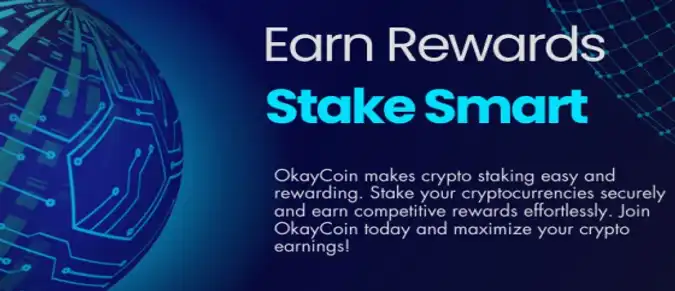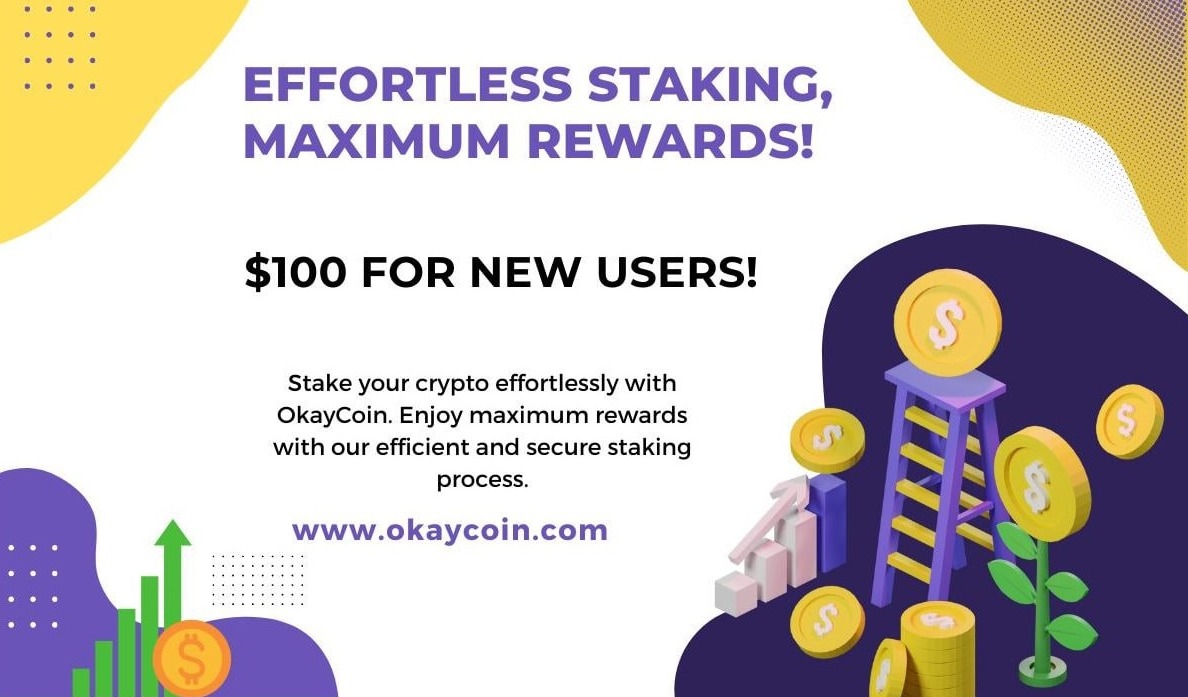
Cryptocurrency is world growing and investors need to make investments in different ways to get more out of digital wings. Two of the most popular ways to do this are through crypto staking and crypto lending. Both involve passive income, but the models are different for these services with staking being a part of PoS (Proof-of-Stake) which is another thing in itself entirely. Also, they come from varying degrees of risks and returns.
Crypto Staking
Crypto staking refers to the process of locking up a portion of cryptocurrency in a virtual wallet to support a blockchain network. It forms part of Proof of Stake and its variants that involve a set of consensus algorithms important in helping secure the network and further validate transactions.
Key Terms
Staking Rewards: The reward accrued from staking your crypto; this is normally given out as extra tokens of the staked cryptocurrency.
Staking pools: Groups of token holders pool resources in order to increase reward earnings.
Staking period: The period in which your crypto has to be locked up in order to get the reward.
Crypto Lending
Crypto lending works by lending your cryptocurrency to borrowers and getting interest in return. Unlike staking, where a participant is involved in the security of the network, lending is a financial transaction. In cryptocurrency lending, platforms like OkayCoin match a lender and a borrower, ensuring one or both parties satisfy their obligations.
Key Terms
Interest Rate: The interest rate is the percentage of your lent crypto that you receive as an interest yield over a determined period.
Collateral: Assets borrowers must deposit to secure a loan.
Lending Period: This is the period that your crypto is being locked up while earning interest.
Crypto Staking vs. Lending
Risk and Reward
Staking: Usually, the rewards are lower and more predictable compared to lending.
Lending: Crypto lending can provide very good returns, especially when interest rates are high.
Flexibility and Liquidity
Staking: While traditional staking locks up your assets for a certain period, OkayCoin offers liquid staking options. This means you are free to earn rewards while you use your assets in any other way you desire, thus being more versatile.
Lending: Lending basically involves the lockdown of your assets for a fixed period, usually for the duration of the loan term. While lending can be highly lucrative, it will always severely curtail one's level of readiness in case of sudden changes in the market.
Ease of Use
Staking: OkayCoin has made staking so easy, even for complete newcomers.
Lending: OkayCoin makes it easier to lend crypto by providing very transparent terms, with clear interest rates, though perhaps with somewhat more hoops to jump through, such as analyzing borrower risk and collateral management.
Available staking plans on OkayCoin.com
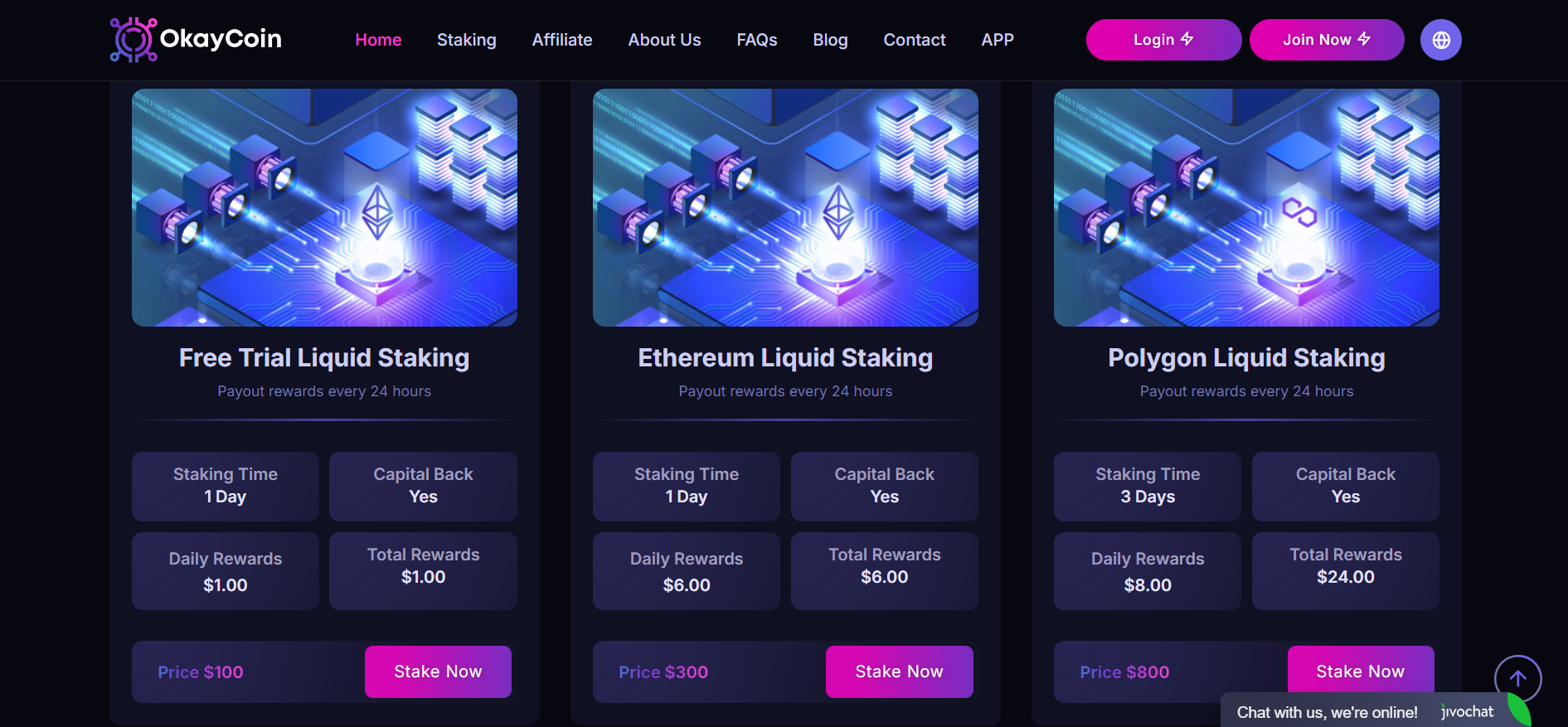
Ethereum (ETH): Running on a Proof of Stake consensus algorithm, Ethereum is the largest smart contract platform and has recently transitioned with Ethereum 2.0.
Polygon (MATIC): Polygon is a scalability platform on Ethereum, with significantly fast transactions at low fees.
Tron (TRX): A blockchain project that has focused on many other topics but still focused on applications with decentralization and sharing content with decentralized applications.
Polkadot (DOT): Polkadot is a multi-chain platform that, in its design, conceived a way to enable different blockchains to interoperate.
Celestia: Celestia is designed as a modular blockchain network that is ambitious in scalability and also security.
Aptos (APT): Aptos is a Layer 1 blockchain that strives to deliver a scalable and user-friendly network. Staking APT naturally forms part of network security, in which rewards are given out for staking and the performance of a specific validator.
Sui: Sui is blockchain designed with extra emphasis on speed and efficiency for the enablement of DeFi applications.
Avalanche (AVAX): Avalanche is a platform for decentralized applications and custom blockchain networks. Staking AVAX securities the Avalanche Consensus Framework, bringing high throughput and low-latency experiences.
Cardano: Cardano is a third-generation blockchain platform that is mainly interested in areas of sustainability, scalability, and interoperability.
Solana: is a high-speed blockchain network with the lowest fees and transaction time. Staking of SOL involves locking in your tokens to secure the network in the validation of transactions. As a result, Solana is one of the fastest blockchains in the space.
Why OkayCoin is Unique in Staking
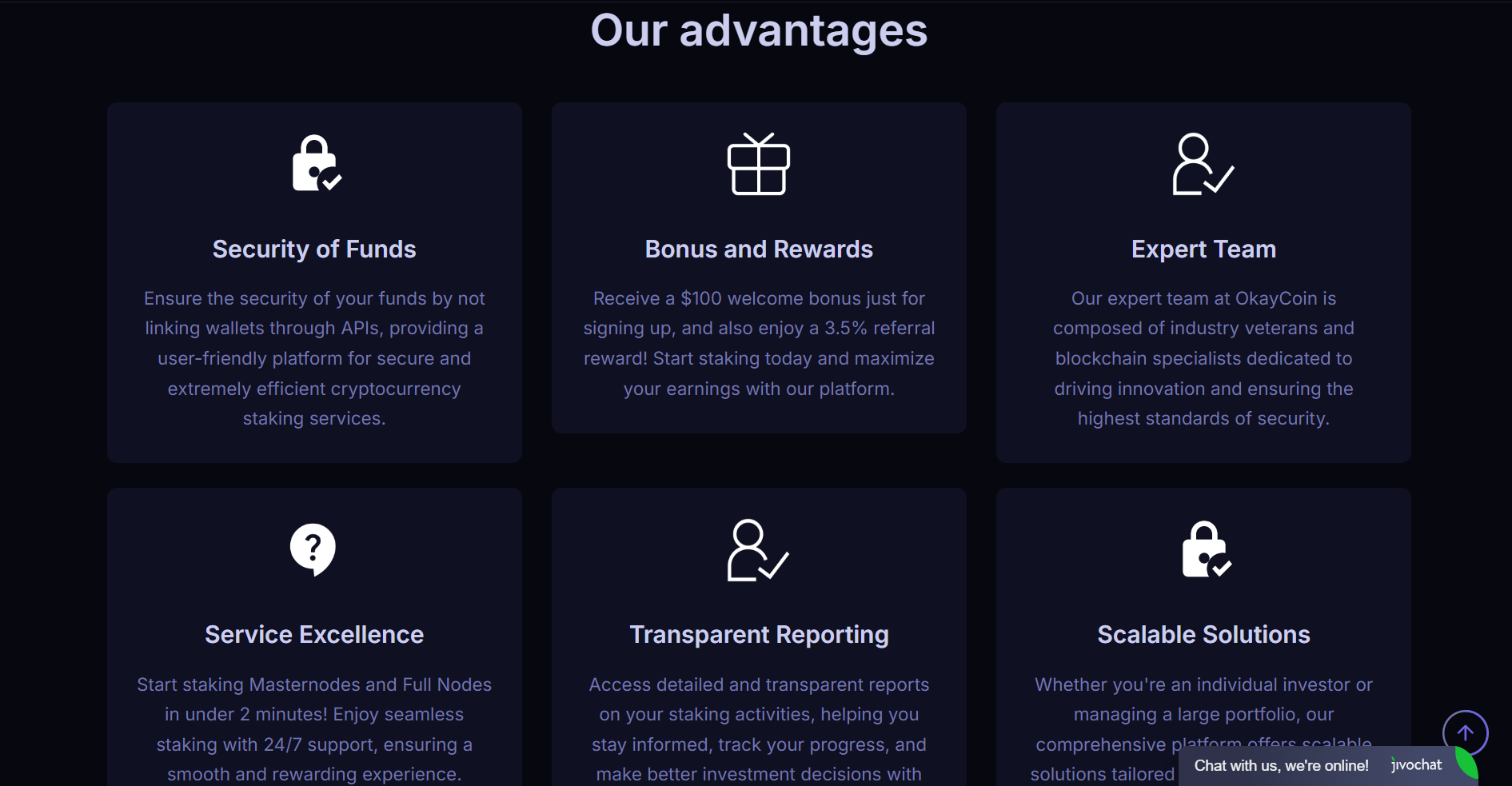
Referral Program
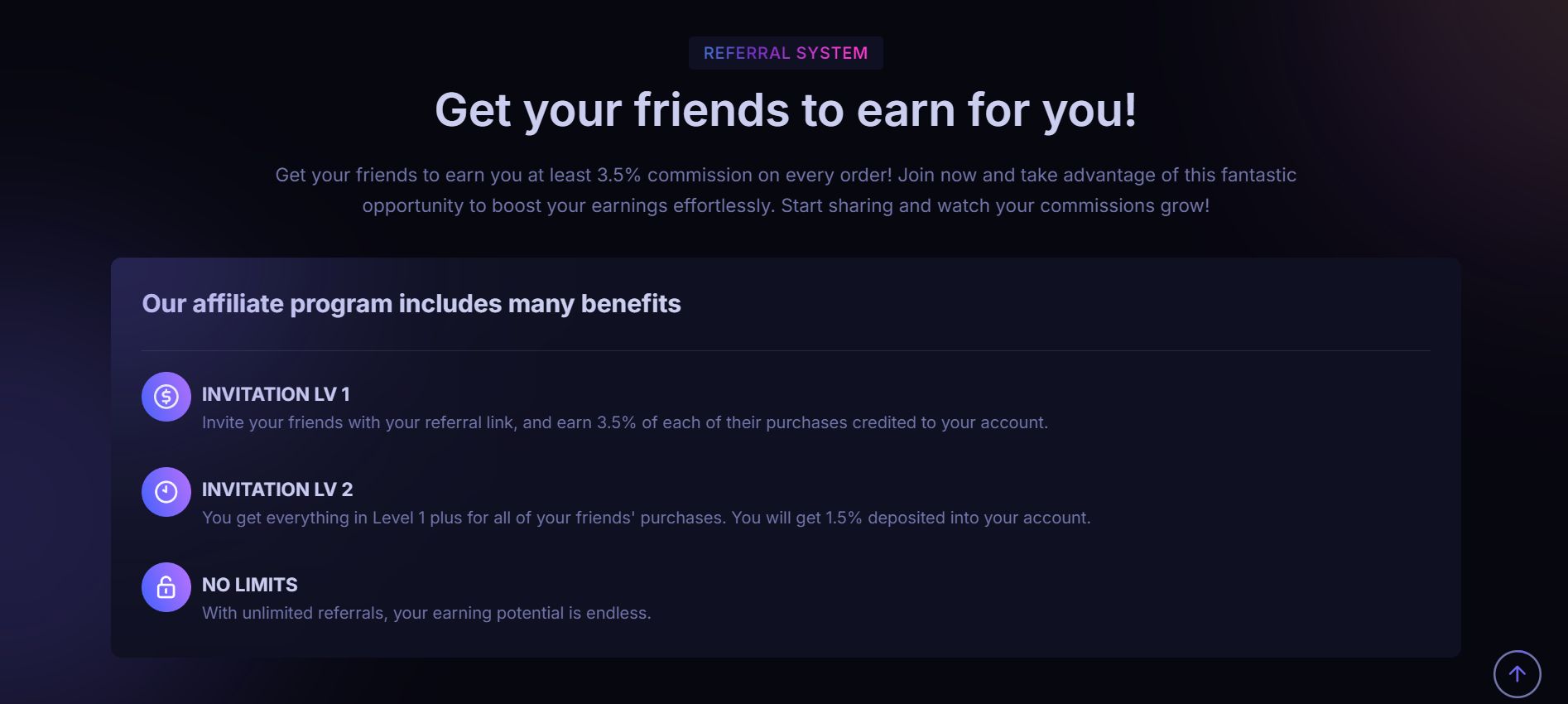
Okaycoin adds an extra layer of possible earnings with their referral program. Thus, people who refer new users on the platform in hopes of receiving a small percentage of their staking rewards further increase their incomes. The program is easy to enroll in and may substantially improve your general returns.
How to Sign Up to OkayCoin and Start Staking
Create an Account: Go to the website of the OkayCoin exchange and create an account using your email address. Verify your email in order to protect your account.
Deposit Funds: Deposit into your OkayCoin wallet the cryptocurrency that you would like to stake or lend.
Choose Your Option: Find on the platform either the staking or the lending section. Choose the cryptocurrency that best suits your investment goals and select either a staking pool or a lend option.
Start Earning: Your selected assets begin earning their rewards or interest. You can track your earnings through the dashboard of the lending platform.
Conclusion
From staking top cryptocurrencies such as Ethereum and Polkadot to exploring lending opportunities with high-interest rates, OkayCoin equips you with everything you need to make sure it's a success. Having special features like liquid staking, among others, and a very rewarding referral program, OkayCoin is definitely among the best platforms via which your investments in crypto can be maximized.
